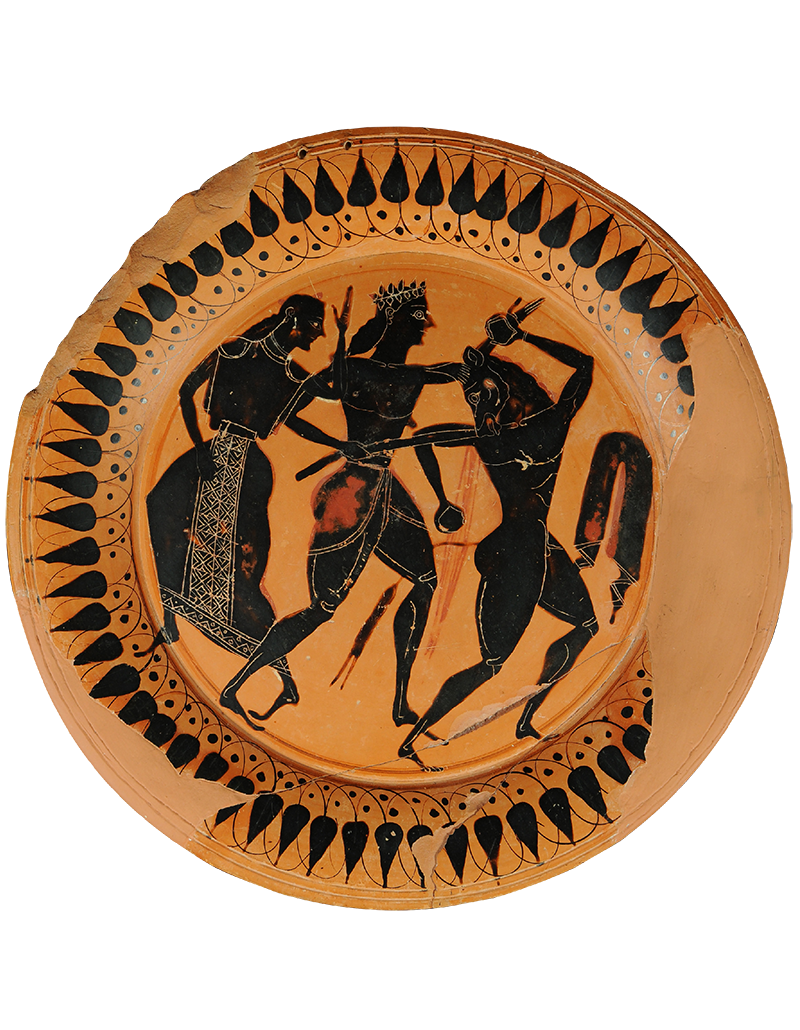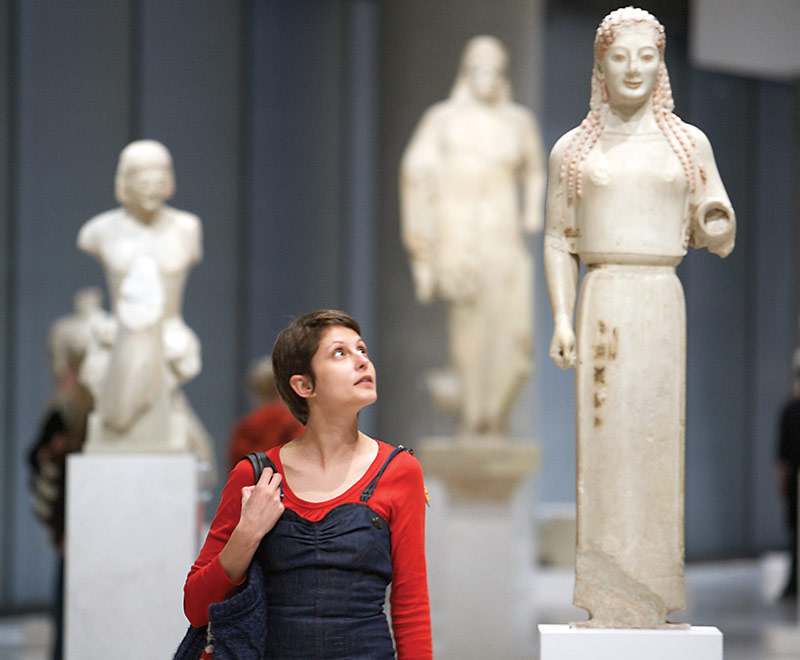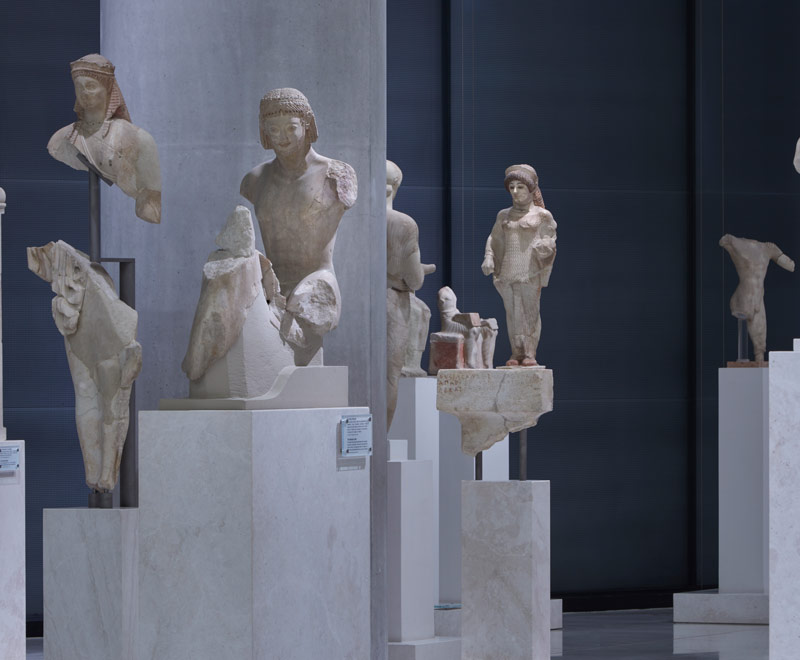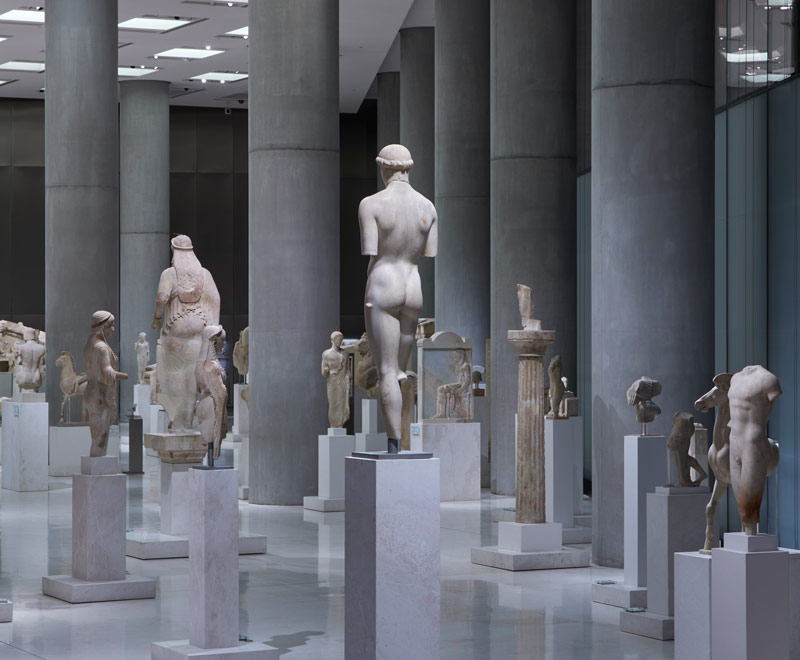THEMATIC SECTION
The dedications
The reorganization of the Acropolis during the 6th century BC, and its rise to political and social prominence, led to the Sacred Rock being flooded with offerings from the faithful. The type, size and material of these dedications were determined by the economic status, social standing and occupation of the person who dedicated them.
High-priced marble sculptures, valuable bronze works and luxurious vessels were dedications made by aristocrats or wealthy craftsmen, while figurines, plaques and busts out of clay represented the more humble offerings of the less economically advantaged.
Often, a grateful dedication was made on the occasion of harvesting one’s first crop or receiving one’s first earnings from a job (aparche), while at other times it represented a tithe of 1/10 of a specific source of income (dekate). In many cases, the dedicant’s name, sometimes also their patronym or even their occupation, were inscribed on the dedication’s base or on the offering itself. Occasionally, artists also engraved their own names on the works they produced. Many dedications were not of Attic origin, indicating the large number of metics (resident foreigners) and other immigrants who were working in prosperous Athens during the 6th century BC.
The most distinctive dedications from the Archaic Acropolis are the Korai, marble statues of young women. Like the other dedications, and the temples themselves, they fell victim to the destructive mania of the Persians, who invaded and burned the Acropolis in 480 BC. The Athenians decision to bury the debris from this catastrophe in large pits has resulted in the preservation of traces of colour on many of them.
The Archaic statues among the debris remained buried until the 19th century, when archaeological excavations on the Acropolis brought them back to light. Now, their exhibition at the Acropolis Museum offers visitors a glimpse into the economic, political, social and cultural environment in Athens that gave birth to the extraordinary art of the Archaic era, while also paving the way for the sculptural creations of the ensuing Classical period.










